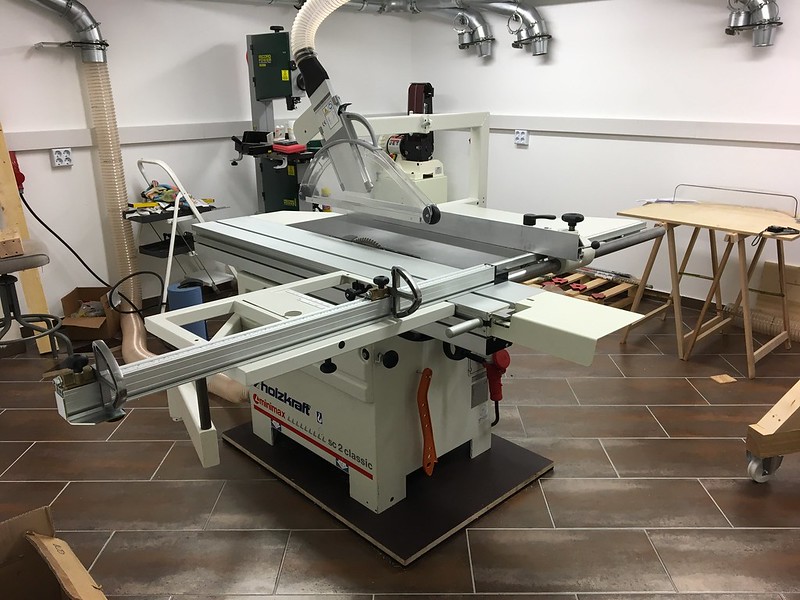The crownguard on the the SCM I use is on a side mounted post and can be raised/lowered to accommodate the height of the material to about 800mm if you wanted to.
https://www.scmgroup.com/en/scmwood...884/sliding-table-saws.896/class-si-550ep.587
I have a similar overhead guard that the dealer included at no cost. The SCM tech found it in the demo area of the warehouse and no one could remember why they had it, so they tossed the unopened box on the truck with the rest of the saw components. It is a great guard and the dust extraction worked well. I used if for a while, but it got in the way when crosscutting wide sheets.

































